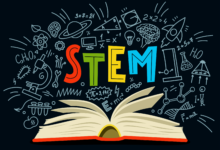7 Important Impacts of EdTech on Education Equity and Access

Education Equity, Education has always been considered a powerful tool for empowering individuals and uplifting communities. However, not everyone has equal access to quality education. In recent years, the emergence of Educational Technology (EdTech) has brought about significant changes in the education landscape, aiming to bridge the gap and improve education equity and access for all. This article explores the impact of EdTech on education equity and access, highlighting its benefits, challenges, and the way forward.
In today’s digital age, technology has permeated every aspect of our lives, including education. EdTech refers to the use of technology to enhance teaching and learning experiences. It encompasses a wide range of tools and platforms, such as online learning platforms, educational apps, virtual reality, and artificial intelligence. The purpose of EdTech is to make education more engaging, accessible, and tailored to individual needs.
Read More: 5 Best Role of Machine Learning in Improving Student Performance
Understanding Education Equity and Access
Education equity refers to the principle of providing every student with the resources and opportunities they need to succeed, regardless of their background, socioeconomic status, or geographical location. On the other hand, education access focuses on ensuring that all individuals have the ability to participate in and benefit from educational opportunities.
Unfortunately, traditional education systems have often perpetuated disparities, leaving marginalized communities with limited access to quality education. EdTech presents a promising solution to address these challenges and create a more equitable and accessible learning environment.

The Role of EdTech in Education Equity and Access
EdTech plays a pivotal role in promoting education equity and access by breaking down barriers and expanding learning opportunities. It allows students to learn at their own pace, provides access to vast educational resources, and enables remote learning. Additionally, EdTech empowers teachers with innovative tools to personalize instruction and cater to diverse learning styles.
By leveraging technology, schools and educational institutions can transcend physical limitations and reach students in remote areas or those with limited mobility. It opens up new avenues for lifelong learning, professional development, and skill enhancement, thereby fostering a culture of continuous education.
Benefits of EdTech for Education Equity and Access
Personalized Learning
One of the key advantages of EdTech is its ability to personalize the learning experience. Traditional classroom settings often follow a one-size-fits-all approach, which can leave some students behind. EdTech tools, such as adaptive learning software, can assess students’ strengths and weaknesses and tailor instruction accordingly. This personalized approach ensures that each student receives the support they need to succeed.
Access to Resources and Information
EdTech provides students with access to a wealth of educational resources and information beyond what traditional textbooks can offer. Online libraries, digital archives, and interactive multimedia platforms allow learners to explore diverse subjects and gain a deeper understanding of various topics. This access to a vast knowledge base promotes curiosity, critical thinking, and independent learning.
Flexibility in Learning
EdTech breaks the constraints of time and location, enabling flexible learning opportunities. Students can access educational content and participate in virtual classrooms from anywhere, at any time. This flexibility is particularly beneficial for individuals with personal or professional commitments that would otherwise hinder their ability to pursue education. EdTech empowers adult learners, working professionals, and those with disabilities to engage in lifelong learning.
Challenges in Implementing EdTech for Education Equity and Access
While EdTech holds immense potential, there are challenges that need to be addressed to ensure its effective implementation for education equity and access.
Infrastructure and Connectivity
In many regions, especially in rural and underserved areas, limited infrastructure and inadequate internet connectivity pose significant barriers to accessing EdTech resources. The digital divide exacerbates existing inequalities, as students without reliable internet access may miss out on crucial learning opportunities. Governments and organizations must invest in robust infrastructure and affordable internet access to bridge this gap.
Training and Support
To maximize the impact of EdTech, educators and administrators need adequate training and support. Many teachers may feel overwhelmed or lack the necessary skills to integrate technology effectively into their teaching practices. Professional development programs and ongoing support can help educators embrace EdTech tools and leverage them to enhance student learning outcomes.

Affordability and Accessibility
While EdTech offers numerous benefits, the cost of devices, software licenses, and internet connectivity can be a barrier, especially for economically disadvantaged students and schools. Ensuring affordability and accessibility is crucial to prevent further marginalization and ensure that all students can benefit from EdTech innovations.
Strategies for Overcoming EdTech Challenges
To address the challenges associated with EdTech implementation, several strategies can be adopted:
- Public-private partnerships to invest in infrastructure and provide affordable internet access.
- Collaboration between education policymakers, technology experts, and educators to develop comprehensive implementation plans.
- Integration of EdTech training and support into teacher education programs.
- Awareness campaigns to highlight the benefits of EdTech and promote its adoption.
- Grant programs and subsidies to make EdTech devices and software more affordable for schools and students.
Success Stories: Examples of EdTech Impacting Education Equity and Access
Numerous success stories demonstrate the positive impact of EdTech on education equity and access. For instance:
- In rural areas of developing countries, mobile learning platforms have enabled students to access educational content offline, bridging the digital divide.
- Virtual reality simulations have provided students with immersive learning experiences, particularly in subjects that are challenging to visualize.
- Online tutoring platforms have connected students with qualified educators from around the world, expanding their access to high-quality instruction.
These success stories showcase the transformative potential of EdTech in creating more equitable and inclusive learning environments.
The Future of EdTech and Education Equity
The future of EdTech holds great promise for further enhancing education equity and access. Emerging technologies like artificial intelligence, augmented reality, and blockchain are poised to revolutionize the education landscape. These advancements have the potential to personalize learning experiences, provide real-time feedback, and facilitate secure credentialing.
However, it is essential to address ethical considerations and ensure that the benefits of EdTech are distributed equitably. Collaboration among stakeholders, continuous research, and policy frameworks are necessary to harness the full potential of EdTech while safeguarding education equity and access.
Conclusion
EdTech has the power to transform education by promoting equity and access for all learners. Through personalized learning, improved access to resources, and flexible learning opportunities, EdTech empowers individuals and communities. However, challenges such as infrastructure limitations, training needs, and affordability must be addressed to ensure that the benefits of EdTech reach every student, regardless of their background or location.
As we embrace the potential of EdTech, it is crucial to strike a balance between technological advancements and the human touch in education. By leveraging technology wisely and fostering inclusive practices, we can create a future where education is truly equitable and accessible to all.
Read More: How to Stand Out in the B2B EdTech Marketplace?

Frequently Asked Questions (FAQs)
Q1: Is EdTech only beneficial for students in developed countries?
EdTech has benefits for students worldwide, regardless of the country’s level of development. It can address educational inequalities and provide learning opportunities in both developed and developing countries.
Q2: Can EdTech completely replace traditional classroom learning?
While EdTech offers innovative learning experiences, it is not meant to replace traditional classroom learning entirely. Rather, it serves as a complementary tool that enhances teaching and learning processes.
Q3: How can EdTech support students with special needs?
EdTech can offer personalized learning experiences and assistive technologies to support students with special needs. It provides accessibility features, adaptive learning tools, and customized resources to cater to diverse learning abilities.
Q4: What steps can schools take to ensure equitable access to EdTech resources?
Schools can establish policies that prioritize equitable access to EdTech resources. This includes providing devices, ensuring internet connectivity, and offering training and support to teachers and students.
Q5: How can parents and caregivers support the effective use of EdTech at home?
Parents and caregivers can support the effective use of EdTech by encouraging its responsible use, monitoring screen time, and engaging in discussions with their children about their online learning experiences.












One Comment